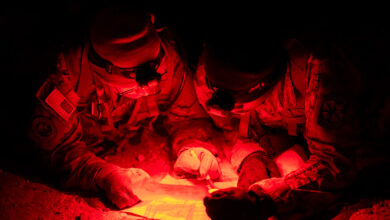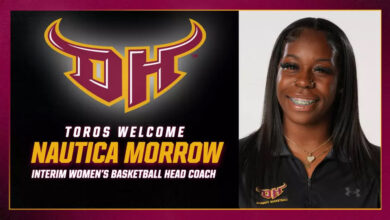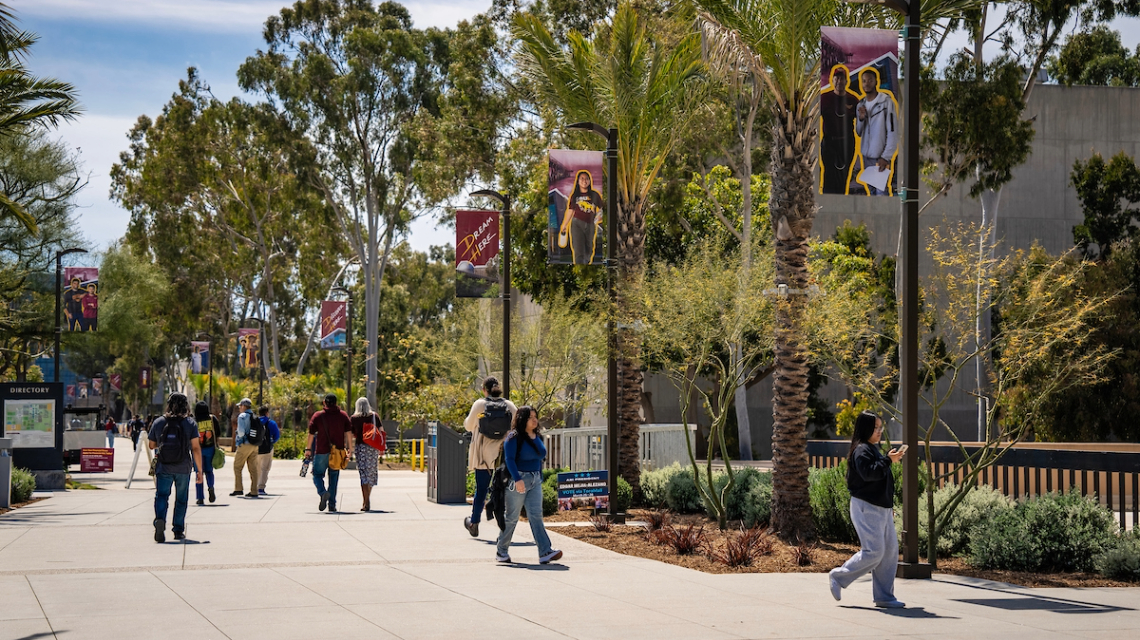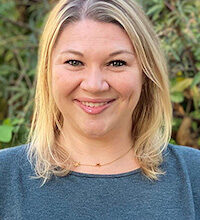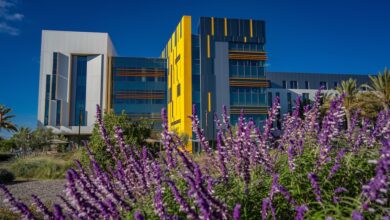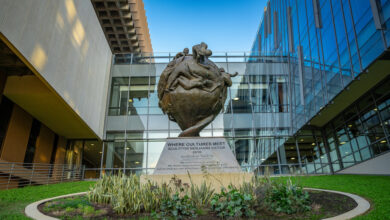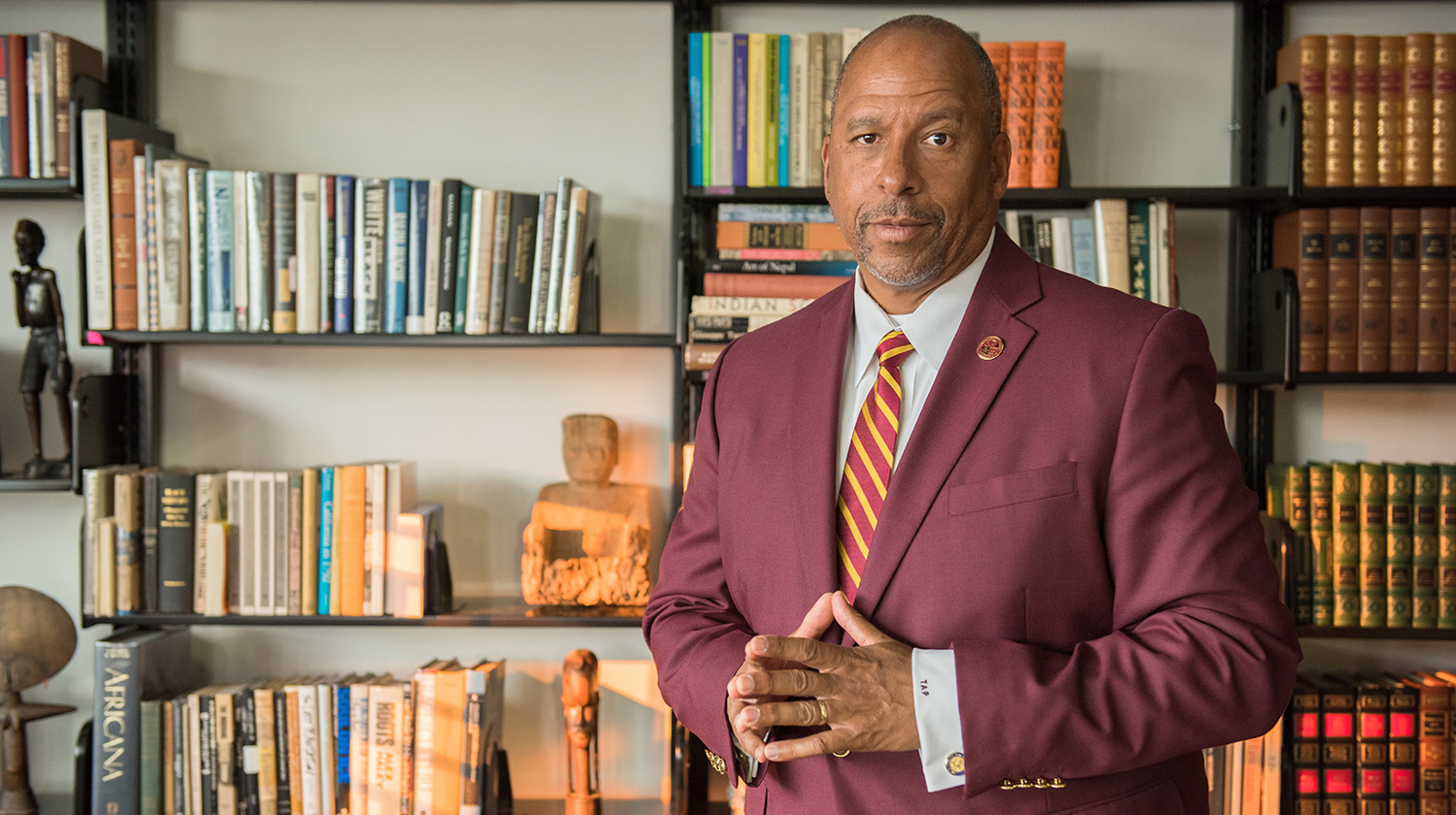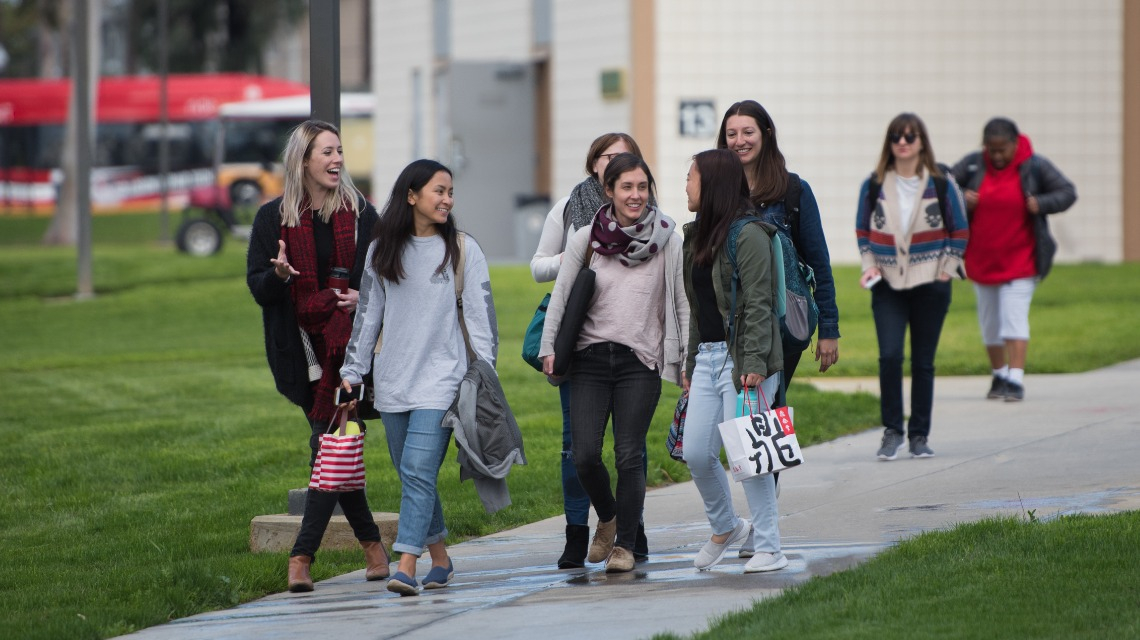
Source: LAist
Students and faculty weren’t on campus this past December when Cal State Fullerton quietly closed its WoMen’s and Adult Re-entry Center.
Rebecca Dolhinow, a professor in the Women and Gender Studies Department, found out about it through passing comments at a Zoom meeting. When it finished, she emailed her colleagues to learn more.
“What do you mean it’s closed?” they wrote back. “What do you mean it’s gone?”
The center provided programming to support women, LGBTQ+, and nontraditional students, like parents and those who transfer to the university past the age of 25.
The surprised faculty took these questions to university leadership. In response, Cal State Fullerton administrators said they dissolved the center “in accordance” with a CSU-wide executive order issued in June … 2015. It also said that all resources and services provided by the center would be “absorbed by campus departments” and that everyone who’d worked there had been reassigned.
Concerned students and faculty, including those who had partnered with the center for years, were perplexed by the university’s messaging.
Karyl Ketchum, who chairs the Women and Gender Studies Department, noted that the executive order does say advocates for sexual assault victims “should not be housed in a women’s center, as some victims are men or gender-nonconforming,” and they “might not be comfortable seeking assistance in a women’s center.”
Confidential advocates support students and employees affected by sexual assault, stalking, harassment, and other forms of violence. Typically, these advocates offer safety planning; accompaniment to medical exams and law enforcement interviews; and referrals to resources on and off campus.
But the executive order says nothing about dissolving women’s centers, Ketchum added. It also didn’t trigger closures at other campuses.
Today, at least 10 of the 23 campuses in the CSU system have a women’s center. In fact, one of them is constructing a new site, and several others have something comparable.
Most of these centers date back to the 1970s and are products of ongoing student and faculty activism. They’re also routinely subject to budget cuts and administrative whims. Far from being an isolated incident, Cal State Fullerton’s decision to close its women’s center is part of a long, embattled demand for these spaces at CSU campuses.
CSU women’s centers have become associated with efforts to prevent sexual and gender-based violence. This is partly because of their ties to events like Take Back the Night, where survivors recount their experiences in a public forum and participants rally in their support.
“For a long time, I was very silent about what happened to me,” said India Sanders, a third-year psychology major at Cal State Dominguez Hills. She served as a volunteer at her campus’ Take Back The Night in April. Following a public share-out, she joined other students as they marched through campus, chanting phrases decrying sexual violence.
“All these different chants, [they] encouraged me and actually gave me a voice to scream it out, let the world know: I’m a survivor, and I’m very strong,” she said.
What Do Women’s Centers Provide?
From their inception, women’s centers have provided services and programs to address a wide range of issues, from access to menstrual products to salary negotiation. The centers also host a plethora of events, including workshops, book clubs, film screenings, conferences, and retreats. At some schools, they house lactation rooms for students who are breastfeeding.
Some campuses – including Cal State Los Angeles, Cal State Channel Islands, Cal State Chico, Cal State Fresno and San José State – used to have women’s centers. Over the years, however, they’ve changed their names to be more inclusive.
At San José State, for instance, students in the women’s studies department and student government worked to establish a women’s center in the early 1970s. In 2015, it became a “Gender Equity Center” to “better reflect the work we do with all genders,” said Robin McElhatton, a university spokesperson.
Those same concerns brought about several name changes at Cal State San Marcos, where the “Associated Students Inc. Women’s Center” became the “Gender Equity Center” in 2010. As of this year, it’s known as the “Women and Gender Equity Center,” with a “focus on topics and issues broadly related to the experiences of women, trans and non-binary students, parenting students, and the impacts of sexism and misogyny,” university spokesperson Brian Hiro said in an email.
Over at Cal Poly Pomona, the center employs the term “womxn” instead of “women.” According to the school’s website, adopting the “x” is an effort to welcome “gender nonconforming individuals, genderqueer folxs, two spirit people, femmes, transgender folxs, and non-binary people.”
San Diego State likewise dropped the “e.” Its website echoes Cal Poly Pomona’s, adding that “it is important for us to acknowledge that mainstream feminism has too often been racist and transphobic, prioritizing the needs and viewpoints of white cisgender womxn.”
In a similar vein, the Women+s Resource Center at Cal State Dominguez Hills uses a superscript plus sign in its name instead of an apostrophe, so as to signal that it “serves people of all genders,” said Megan Tagle Adams, the center’s director. “When we say women,” she added, “we are including trans women, cisgender, women of all races and ethnicities and cultural backgrounds.”
Despite variations in nomenclature, the centers are aligned in their mission. They’re also similar in their ongoing quest for stability.
A History In Flux
Founded in 1974, the women’s resource center at San Diego State was initially a student-run organization. It wasn’t until 2016 that the center was relaunched in a renovated space with full-time professional staff. At Sacramento State, the women’s resource center has had many ups and downs. Since launch in 1978, it has experienced repeated cuts in funding, some of which triggered temporary closures. The center, in fact, has closed and reopened at least three times.
Dolhinow, the professor at Cal State Fullerton, sees the closure of the women’s center at her campus in this context. She also pointed to the sexual harassment scandal that recently toppled the CSU’s chancellor, along with the upcoming Supreme Court decision poised to overturn Roe v. Wade, the landmark 1973 ruling that guarantees the constitutional right to obtain an abortion.
“Given what’s going on with women’s rights at the CSU and across the nation, it’s pretty scary – and symbolic,” she said.
Tagle Adams, the Cal State Dominguez Hills director, worries that consolidating women’s centers and LGBTQ centers into “gender equity” spaces might be more about cutting costs than intersectionality, a lens through which different forms of inequality can be seen to operate together and often exacerbate each other.v Colleagues at other universities have seen this happen, she said.
“Instead of combining the number of staff positions and the amount of space and the budget, [campuses] restricted it,” Tagle Adams said. “So it was actually a way for them to conserve resources.”
At Cal State Fullerton, faculty responded to the closure with a petition calling on the university to immediately reinstate the WoMen’s Center. To protect it from “future threats of closure,” they also demanded that it be guided by a faculty advisory board. To date, it’s been signed by more than 350 campus educators across various departments.
In March, the university apologized to concerned faculty in a private meeting that has since been published online.
“This was a failure in leadership,” said Vice President for Student Affairs Tonantzin Oseguera. “Because of staff transitions and some other factors,” she added, “we didn’t do the robust consultation that we normally do . . . I know this caused a lot of hurt and pain, and I acknowledge that.”
Oseguera then said the decision was made before she was appointed and that she looked forward to dialoguing about how to ensure that all of the services “remain with our students.”
Sarah Bauer, Cal State Fullerton’s Title IX coordinator, reiterated that the executive order mandates that confidential advocates for survivors be housed in “gender-neutral spaces,” adding that this had paved the way to “the transition.”
Oseguera said the decision to close the center started in 2019, though the campus should have been compliant with the executive order by 2016. This was around the same time Cal State Dominguez Hills was investing in a new space, so not every CSU campus interpreted that executive order in the same way.
The Division of Student Affairs, Oseguera added, took a $2.3 million cut during the COVID-19 pandemic, which compelled her to close the women’s center and move the services it provided. Her goal was to protect these services “from any further erosion,” she added, so she “put them in the places that would be protected because of student fees,” so “they wouldn’t be subject to state reductions.”
Faculty members who signed the petition, including Dolhinow and Ketchum, chose to forgo the meeting.
Janica Torres, a fourth year majoring in American Studies and minoring in Women and Gender Studies, worked at the women’s center at Cal State Fullerton from 2019 to 2020.
She was upset to hear about the closure, in part because it was her home away from home.
“They had food, they had tea. There was a study space,” said Torres, who’s in her 30s. “There was this general sense of safety and belonging for someone like me, who’s non traditional.”
Since then, campus leadership has been negotiating with the signees, who insisted that providing dispersed services was insufficient.
In an email to Cal State Fullerton leadership last month, Kristin Beals, a professor in the psychology department, warned that “Many signatories are asking for more direct action,” including “protest, pickets, [and] disruption of graduation.”
“[B]ut I would like to work in a true model of shared governance and get this done for our students,” she added.
And they have gotten it done, for now: In an email this week, university spokesperson Chi-Chung Keung said the campus will open a center for “womxn-identified” students at the start of the 2022-23 academic year.
Why Having A Physical Space Matters
At Cal State Dominguez Hills, the women’s center has also faced instability. Currently, they have dedicated staff who run programming, campus events and internships. But they don’t have a space for students to congregate – at least not yet.
Since its launch in 1972, the center “has had a history of starts and stops,” said Lilly McKibbin, a university spokesperson.
“In 2009, after a particularly rough round of statewide budget cuts, the center was closed down,” she added. Then, it reopened in 2014.
But five years later, the building where it was housed was torn down to create another. In the interim, the women’s center and other affinity groups were housed in the campus library.
“That did not work,” said Tagle Adams, who serves as the center’s director. Student engagement dropped by about 60%.
The space “had open floor plans, so we didn’t have privacy,” said Tagle Adams. “And it can be uncomfortable for students to come and say, ‘Hey, I just found out that I’m pregnant, and I don’t know what to do. Can I talk to someone?’ when, 10 feet away, someone’s doing a mock interview.”
Her team, along with the other groups who were moved to the library, made their dissatisfaction known. Ultimately, the women’s center was offered an existing trailer, but that plan was scrapped because it had mildew.
“We pushed back and said, ‘Students are not going to want to voluntarily come and hang out and eat their lunch here,’” said Tagle Adams.
The university promised a new trailer, but then came the pandemic. Supply chain issues led to construction delays. Now the university hopes to open a new site this fall. For now, Tagle Adams and her staff borrow office space. When they meet with students one-on-one, they sit at a table in a nearby courtyard.
“Having an actual physical space is critical to successfully serving our students,” she said. “And by space, I mean one with private offices for myself and [my colleagues] to be able to have those one-on-one conversations, and ones that we can use all the time.”
In her view, students in crisis should be able to just pop in to the center, not be obligated to make an appointment. Tagle Adams also maintains that having a space for private conversations is key. Often, students approach her saying they’d like to chat about career ideas, but some of those conversations end up unearthing trauma.
“They’ll say: ‘Oh, I’m thinking about majoring in women’s studies, and I’d love to work in a women’s center one day, I’d love to hear your experience.’ That seems like a conversation that you could probably have publicly,” she said. “But then, throughout the course of the conversation, they say something like, ‘I became really passionate about women’s studies after I was sexually assaulted.’ And all of a sudden, you’re like, ‘Oh, this actually would have been better as a private conversation.’”
Tagle Adams speaks from experience. When she was an undergraduate at Cal State Long Beach, she spent the first few years feeling disconnected, despite living on campus. Then, one of her women’s studies professors had her visit the women’s center as part of an assignment. While visiting, she came across a flyer for a feminist student organization.
“It took me a couple weeks to work up the courage, but I ended up going to that meeting,” Tagle Adams said. With time, she began eating her lunch at the center, making friends and getting more involved on campus. She became co-chair of that student organization and helped plan Take Back the Night. All of these experiences, she said, helped her connect to the university.
“I just know the impact that it had on me,” she said, “both my personal development and professional development, just finding that space.”

